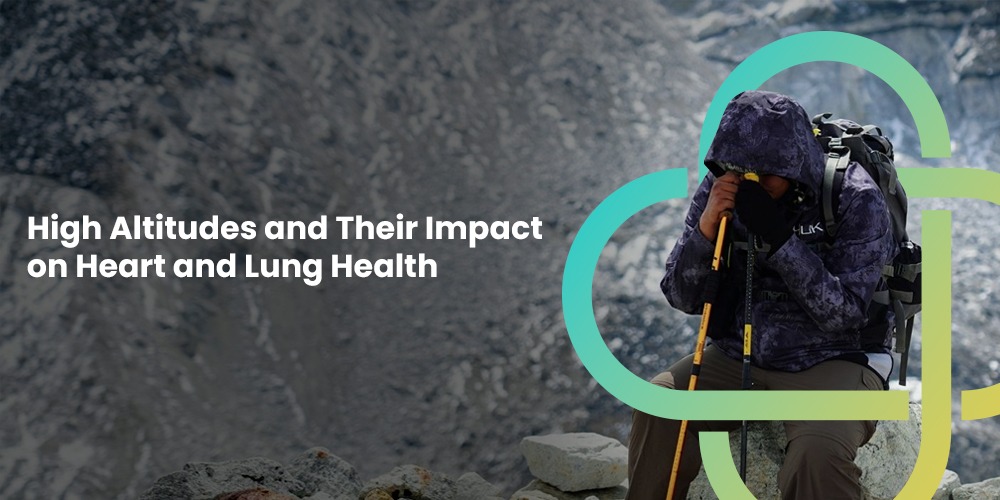The charm of towering peaks and breathtaking vistas often draws adventurers to high-altitude destinations. Yet, as travelers ascend to these beautiful landscapes, their bodies undergo significant changes that can impact heart and lung health. In this blog, we will delve into the connection between High Altitudes and Their Impact on Heart and Lung Health.
Oxygen Problem- Altitude’s Impact on Heart and Lungs
Thin Air and The Oxygen Problem
The air becomes thinner at high altitudes, containing fewer oxygen molecules per breath. As a result, our bodies must work harder to extract the oxygen needed for cellular processes. The heart responds by pumping more blood to deliver oxygen, while the lungs increase their ventilation rate to capture sufficient oxygen. This collaborative effort ensures our cells receive the vital sustenance they crave.
High Altitude and Cardiovascular Function
While the heart’s response to altitude is generally adaptive, individuals with pre-existing heart conditions may encounter challenges. For instance, high-altitude environments can worsen hypertension, increasing the workload on an already stressed heart. Moreover, the risk of arrhythmias may elevate due to the heart's attempts to accommodate oxygen demands. A deeper understanding of these interactions is crucial for individuals with heart conditions contemplating high-altitude adventures.
Altitude-Induced Ailments
High-Altitude Pulmonary Edema (HAPE)
Contrary to popular belief, the risk of developing HAPE, a severe condition where fluid accumulates in the lungs, is relatively low for most individuals traveling to moderate altitudes. HAPE is more commonly associated with people going to extreme altitudes. However, individuals with existing heart and lung conditions should be cautious and consult their healthcare providers before embarking on high-altitude journeys.
Body’s Coping Mechanism
Our bodies possess a remarkable ability to adapt to changing environments. Acclimatization, adjusting to high altitudes, involves physiological changes that enhance oxygen delivery and utilization. Increased production of red blood cells, for instance, improves the blood’s oxygen- carrying capacity, while adjustments in breathing patterns optimize oxygen intake. Understanding these natural mechanisms can empower travelers to make informed decisions and enjoy safer high-altitude experiences.
Navigating High Altitudes Safely
Safety for Travelers with Heart Conditions
Individuals with heart conditions should approach high-altitude travel thoughtfully. Prior consultation with a healthcare professional is vital to assess one's readiness for altitude exposure. Medication adjustments, hydration plans, and gradual mountings are essential considerations. Moreover, recognizing the signs of altitude sickness, such as headache, nausea, and dizziness, can help differentiate between normal acclimatization and potential health risks.
Hydration is Important
Staying hydrated at high altitudes is paramount. The drier air and increased respiratory rate can lead to elevated fluid loss, making hydration a critical component of a healthy high-altitude experience. Adequate water intake supports blood circulation, oxygen transport, and acclimatization. However, excessive fluid intake can strain the heart, emphasizing the importance of a balanced approach.

